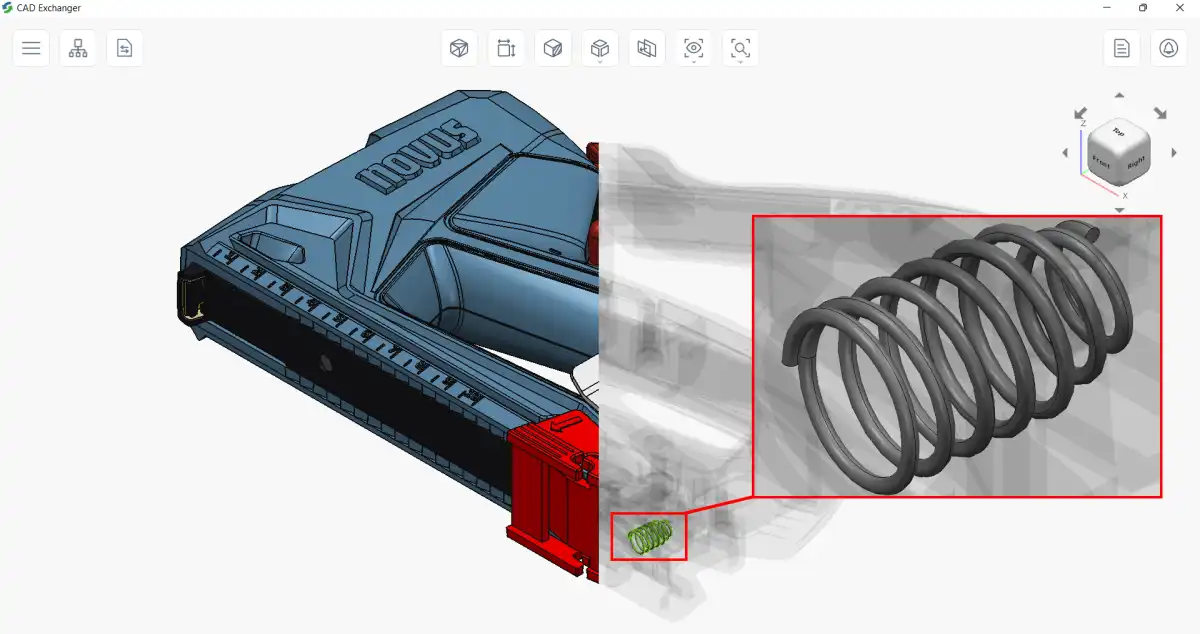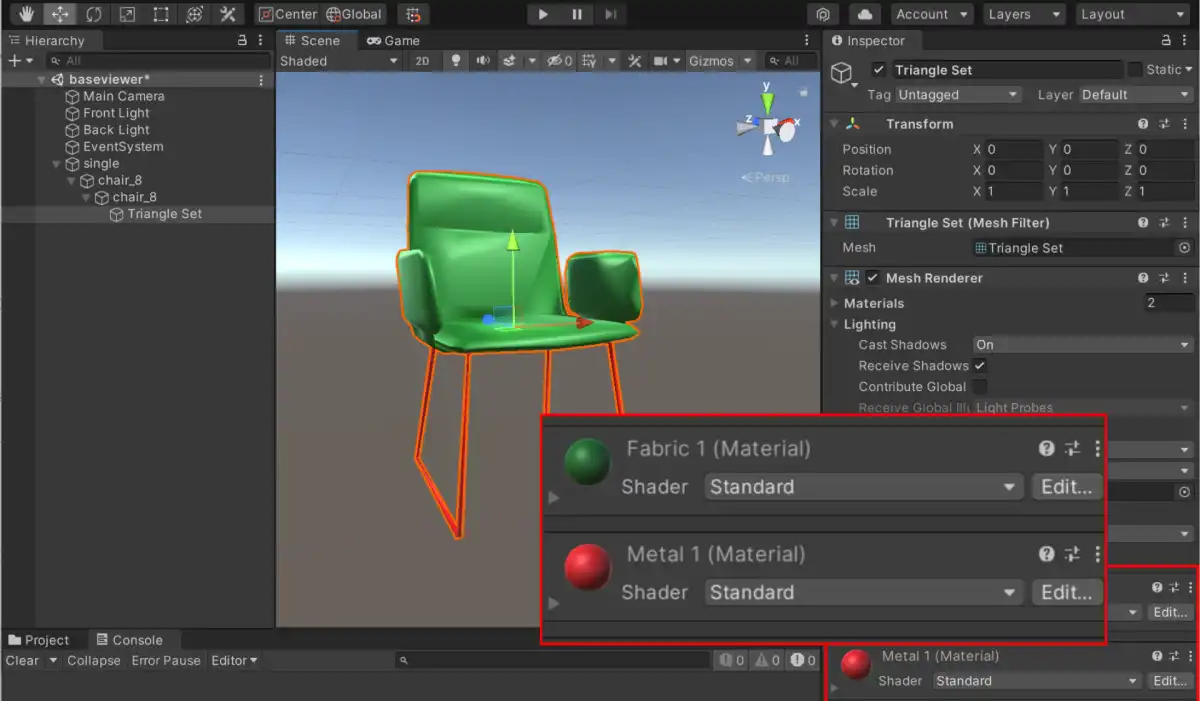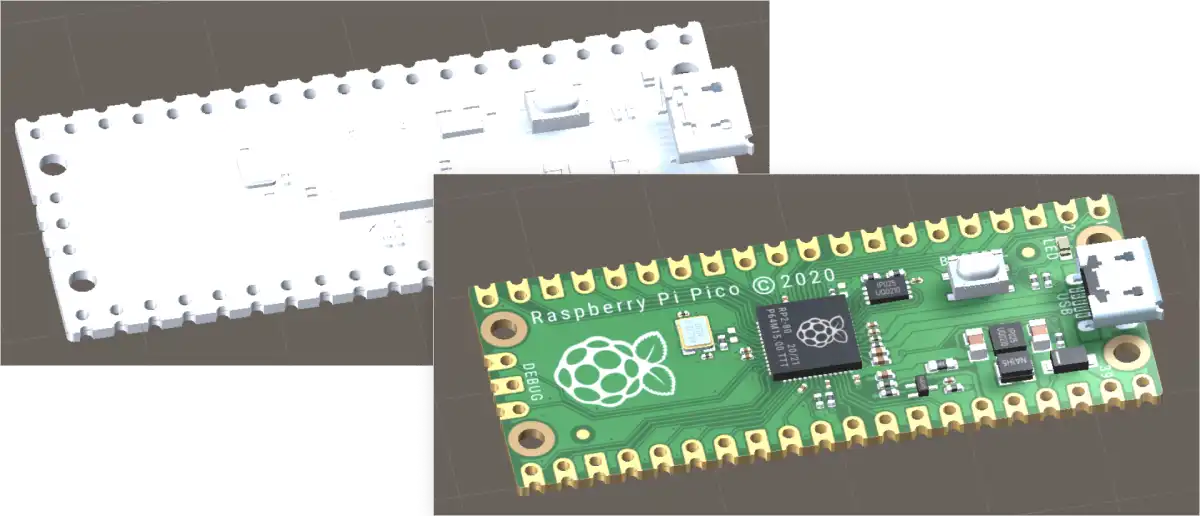In the last three months, CAD Exchanger developers have focused on addressing as many customer reports as possible. As a result, a massive collection of issues in various components were resolved and the BIM data support was expanded. The key improvements are the following:
- IFC4 import with CAD Exchanger
- Improved import of CAD models properties
- Video tutorials and sample models in CAD Exchanger viewer and converter
- Enhanced scope and algorithm of CAD Exchanger SDK
- Unity plugin improvements
If you would like to consider each new feature of the 3.12.0 version, check out the CHANGES.txt file. And to get the details on the most significant enhancements, read the post below.
IFC4 import with CAD Exchanger
CAD Exchanger has supported the IFC format since 2018. Until recently, version IFC2x3 was the only one available. And now users can import IFC4 files, including all the entities by IFC 4.1 specification: B-Rep representations, assembly structure, names, user-defined properties, colors, and layers.
IFC or Industry Foundation Classes format is an open-source standard for sharing BIM data along with its proprietary fellows Autodesk Navisworks, Autodesk Revit, and AutoCAD’s DWG. It allows engineers and architects to exchange their projects with partners and pass them to the next steps of building and facility management.
If you want to know more about the format’s scope and peculiarities, please refer to the IFC overview in our blog.
For CAD Exchanger capabilities related to IFC format, read the documentation on the IFC converter.
Improved support of CAD models properties
Import of geometry and topology

CAD Exchanger supports B-Rep and polygonal representations of 3D data. The development team quarterly expands the scope of topological and geometrical entities and improves their processing. From version 3.12.0, bezier surfaces are available for STEP files and sweep segment surfaces could be imported from CATIA models. We’ve also solved some complex import cases of sheet bodies, cylindrical and planar faces, as well as offset surfaces in Parasolid, JT, NX, Solid Edge, and SOLIDWORKS.
Import of product structure
CAD Exchanger users get access to the product structure of the imported 3D files (i.e., their part-assembly hierarchy and properties of these components). CAD Exchanger 3.12.0 includes improvements to a few workflows involving the model structure. Missing external references in Creo models are now recorded and available for a query after import, just like they already are in many other formats - STEP, JT, SOLIDWORKS, etc. In SOLIDWORKS, we've made improvements in specific cases for component placing and import of component names.
Import of metadata
Thanks to the support of metadata (names, IDs, user-defined properties, layers, PMI), CAD Exchanger enables the integrity of such additional information as 3D model design intent, manufacturing and usage guidelines. CAD Exchanger 3.12.0 includes several enhancements of names and layers transfer within CATIA, DWG, DXF, SolidWorks, STEP, and STL files.
Import of visual attributes

For the 3D models which are to be demonstrated to the third party, the quality of their visual representation is utterly important. Users need a precise display of the colors, textures, materials, and lighting. In order to achieve compelling and realistic visualization, CAD Exchanger improved the coloring of the SOLIDWORKS B-Rep objects
There is now also a reliable import of materials from FBX. In the cases where multiple materials are assigned to different regions of a single mesh, CAD Exchanger now imports them all correctly, ensuring visual appeal and data integrity.
Video tutorials and sample models
Three months ago, CAD Exchanger launched its new user interface. The focus of the following releases is to expand UI functionality and improve its appearance. To date, we’ve enhanced the usability of the tool and added tutorials and sample models.
Work on usability includes the following improvements: certain elements are easier to click, clickable and copyable elements are distinguished by a corresponding cursor shape, and multiple animations were added to simplify navigation and notify users of changes.
Video tutorials and sample models are now available from the starting page. Videos will guide users through the basic processes available in CAD Exchanger: 3D model viewing, conversion, examining product structure and properties, building sectioning and exploded views, and building LODs. Sample models should come in handy if you would like to test out CAD Exchanger but do not have access to your representative CAD models yet.
Improved scope and algorithm of CAD Exchanger SDK
A few years ago, CAD Exchanger SDK gained the ability to identify elements of the model's product structure with globally unique identifiers (GUID). It allows client applications to store relationships between domain-level data and 3D parts and assemblies. In 3.12.0, the identification capabilities were expanded to B-Rep shapes, which creates possibilities for even deeper integration of CAD data into a domain model by linking various pieces of domain information to faces, edges, and vertices.
The core algorithms in SDK have also received numerous improvements. In particular, the bounding box computations for complex geometry were sped up, the API for applying transformations to surfaces was improved in specific cases, and duplication of materials in the model was eradicated through smarter sharing of textures.
Unity plugin improvements

CAD Exchanger team updated its Unity plugin to simplify and ameliorate CAD model integration into the Unity scenes. Since version 3.12.0, the conversion of ModelData_Model to GameObject retains the relationships between constituent GameObjects and their originating CAD Exchanger entities. It allows deeper integration of CAD Exchanger into your workflow, for example, it makes possible the application of the SDK's algorithms even after the initial conversion to GameObjects.
Other new features include the support of the line sets, point sets, names of triangle sets in product structure, and TGA and TIFF external textures. What’s more, now the plugin enables easier access to the model's metadata (names, IDs, user-defined properties, layers, PMI), sustainable conversion between different coordinate systems, and improved general stability thanks to the new options and issue fixes.
What’s next?
Among the other latest changes in CAD Exchanger was an expanded polylines support in FBX, glTF, and STEP; fixed data race in import and export of certain elements of Parasolid, JT, NX, Solid Edge, Solidworks, and STEP models; and many other minor bugs.
If you are already a CAD Exchanger user and want to give the new version a try, create an account in the Customer Corner and download CAD Exchanger 3.12.0. When signing up, please enter the email which was used for purchasing the license. Your project page will be automatically created with all the licenses linked to the indicated email address.